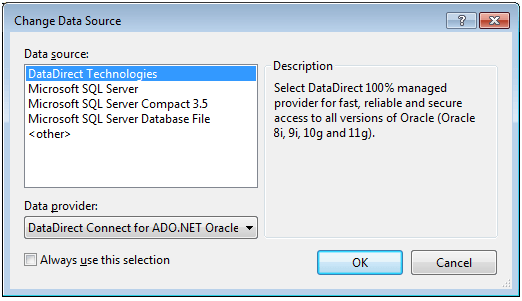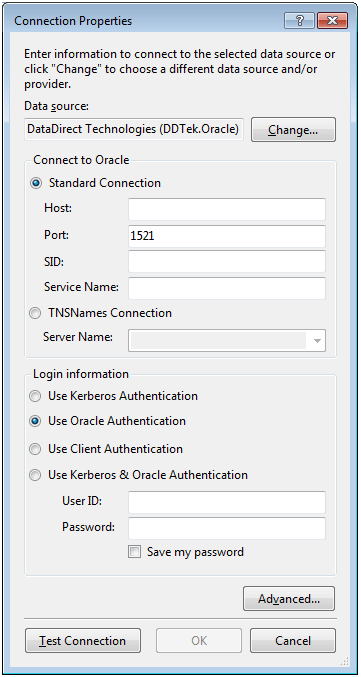Effective EF for Oracle - Visual Studio 2010

Since the announcement of Visual Studio 2010 and the .NET Framework 4.0 Beta 2 we have seen torrent of requests from people looking to use our Oracle EF provider with VS 2010. The good news is that we are planning to support it officially in our upcoming service pack, due early next year. The even better news is that demand is so great we've broken out the manual steps you can take if you want to get started with your Oracle with Visual Studio 2010. You'll be able to enjoy the full spectrum of EF 1.0 features and our EF enterprise extensions. More news on our upcoming EF 4.0 support on this blog soon – stay tuned. Many thanks to Jayakhanna Pasimuthu for the putting this together.
Oracle support for EF in Visual Studio 2010 instructions follow below…
Note: If you're running as in Windows XP, Vista or 7 you must run these as an Administrator.
3. Change to the tools directory (C:Program FilesDataDirectConnect for ADO.NET 3.3tools) and run the *install2010.cmd* from that directory as shown below.
[cc lang="sql" line_numbers="false"] Install2010.cmd "C:Program FilesDataDirectConnect for ADO.NET 3.3DDTek.VisualStudio.DataTools.dll" [/cc]
NOTE: The parameter passed should be the full path, along with the filename of wherever the latest "DDTek.VisualStudio.DataTools.dll" resides
4. Next, go to the folder C:WINDOWSMicrosoft.NETFrameworkv4.0.21006Config and add the below highlighted entries in machine.config file under <DbProviderFactories> tag
[cc lang="xml" line_numbers="false"]
[/cc]
NOTE: The folder v4.0.21006 could be different based on the VS2010 version being installed on a system. So one has to choose the latest folder starting with v4.0

7. You can then easily configure your Oracle connection using either TNSNames.ora file or directly using the connection properties dialog.

Enjoy!

